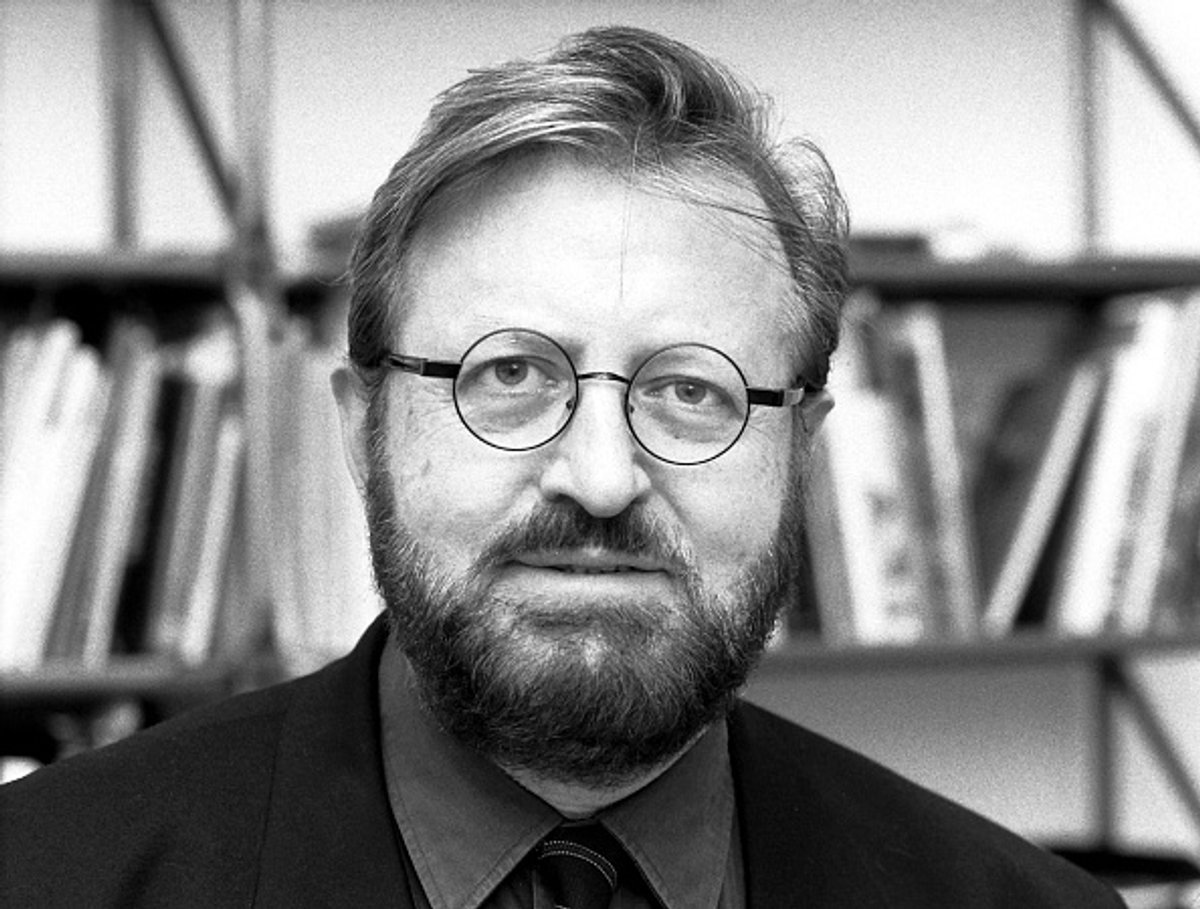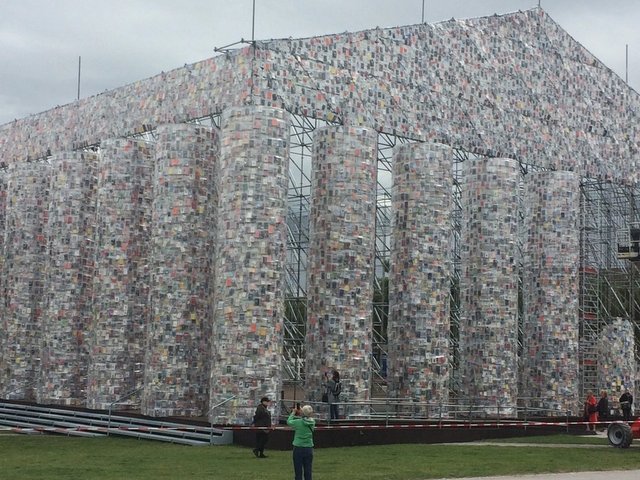Christos Joachimides, the Greek-born German curator, was born in Athens in 1932 and passed away also in Athens on 11 December 2017. He was nothing if not a a controversial figure in the world of art; who both divided opinion and seldom himself sought consensus on matters of aesthetic choices. But in different ways he was a decisive figure for the art worlds of Greece, Germany and the United Kingdom and especially in those three countries' capital cities, Athens, Berlin and London.
He came to Germany to study in Stuttgart and Heidelberg in 1953 settling in Berlin from 1958 onwards and during the 60s spent time in both Rome and Paris, where in the former he spent time with artists as different as Pino Pascali and Jannis Kounellis in the the then burgeoning times of Arte Povera but also with Balthus, the grand painter resident in the Villa Medici. In Paris he was close to the Greek exiled community of artists such as Takis, but also knew well many artist painters of the so-called Nouveau Réalisme and their legendary apologist critic Pierre Restany.
In Germany he rapidly gravitated to the circle of artists such as Joseph Beuys and Wolf Vostell, very much in the vanguard of the student revolution that was to erupt around the Western world in 1968, but equally to the exclusive world of painters and other artists gathered around the gallery owner Michael Werner—artists such as Georg Baselitz, Markus Lüpertz, A.R. Penck, Anselm Kiefer, and others who were in Germany then deeply controversial, even marginal figures, but later were to make huge international impact.
And it was in that context that I met him first in November 1973 in a coffee house on the Kurfüstendamm. The UK had only two years earlier entered the European Community and The ICA had been allocated a small sum of money to celebrate this with month-long festivals that were to examine the”strange” cultures of our new “partners". As I spoke quite decent German, I was asked to direct their contemporary German Festival. I had in fact been given some information about an exhibition that Christos had just organised in Hanover with the title Art in the Political Struggle and though I been warned against him as a potentially “dangerous character” in my month-long research trip around Germany, I was determined to meet him. He liked to tell me how he almost did not show up expecting to be bored by the prospect of meeting a weird British curator and as I was later to discover, his boredom threshold was very low indeed. But in fact we instantly got on famously. I think essentially we appreciated each other's constant search for the radical in art, whilst maintaining our love and respect for the great European cultural traditions—something, especially in Germany, that was in danger of being thrown out with the bathwater.
We went on to do two great shows at the ICA, which owed much to his vision: Art into Society where, inter alia, Beuys made an unprecedented month-long every day performance resulting in his piece Directive Forces, now in the National Gallery in Berlin. In the year after the fall of the Greek Colonel Regime, we then together staged a festival of contemporary Greek culture centred on the ICA that, inter alia, marked Kounellis’ first presentation in the UK. Both for different reasons were hugely controversial manifestations in Germany and Greece respectively, generating volumes of press—perhaps an indication of how sensitive both Germany and Greece were to their reputation in London—something that I was to experience even more intensely when I arrived at the RA in 1977. It was at this time that Christos got to know Nicholas Serota then the director of the Whitechapel and they too collaborated on, in Germany itself, a controversial show called 13 Degrees East. Thus we all became close friends and when a sudden emergency gap in the RA programme occurred in 1980 for the following January. Frederick Gore and Roger de Grey, then the chairman of the Exhibitions Committee and treasurer respectively of the RA, asked me to put on some kind of Modern art show if possible from New York (which in the then general consensus was the only bit of the universe outside London that counted), and all three saw an opportunity to do something unexpected.
A New Spirit in Painting was the result. It was so controversial that a night before the opening the show was even threatened with closure by some of the RAs! The following year Christos and I curated the legendary Zeitgeist exhibition at the Martin Gropius Bau in Berlin where, centred on Joseph Beuys Stag Monuments, a grand baroque version of A New Spirit took place and which was decisive in making Berlin a true art centre at last to rival Cologne and Düsseldorf. As a result of this huge success Christos with some of his friends and allies set up the Zeitgeist Gesellschaft, which allowed Christos and I to stage shows at the Berlin Gropius Bau together such as Metropolis (1991), American Art in the 20th Century, and in 1997 The 20th Century: the Epoch of the Modern, the latter curated together with the outstanding Austrian art historian and poet Wieland Schmied.
Those were Christos’s truly great days. He expanded our outlook on the world, indeed as Nicholas Serota wrote to me on learning of his death that "he expanded our lives and education”. But the 21st century was to see an even greater expansion of the world of art that for better or worse perhaps he was nor fully able to keep up with—although for the Athens Olympic Games in 2004 he in had in Athens been able to stage by himself a large exhibition of contemporary art called Outlook.
He was someone who lived for art, especially painting, and was a friend of many artists in Greece and also in Germany, from Rainer Fetting to Michel Majerus. In his later years he married a younger curator called Birgit Hoffmeister, who unexpectedly, most tragically for him, predeceased him. He never sought the protection of working for an institution—museum or university—preferring the dangers of a freelance life. To those who knew him well he was wonderfully warm and generous. Perhaps his attitude to art is best summed up by the title of his essay for the Art into Society catalogue: The Truth must also be Beautyful (sic).
He is survived by Alexis Joachimides, a professor of Art History at the University of Kassel and a specialist in 18th-century British aesthetics.



